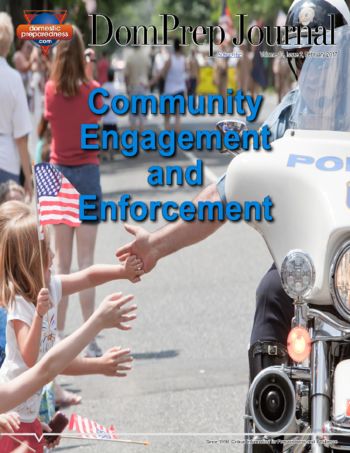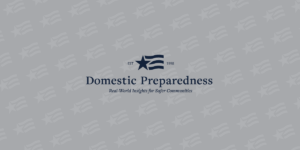

Three “I”s to Repairing the Police/Community Relationship
Marc R. Partee
February 22, 2017
Over the years, the fragile relationship between law enforcement agencies and the communities they
serve has been strained to the point of fracture. The goal now for law enforcement agencies is to repair
existing relationships with the communities they serve and build new positive relationships with youths
to ensure future community resilience.

Charles J. Guddemi Retirement
Domestic Preparedness
February 21, 2017
DomPrep would like to announce the retirement of a good friend and advisor, Charles J. Guddemi.
After more than 25 years of law enforcement service, he retired from the U.S. Park Police on 31 December
2016.

Today’s Law Enforcement Challenges
Kay C. Goss
February 21, 2017
Civil unrest in cities across the country challenges public servants to think analytically about
how to restore public confidence and protect citizens from bad actors and events that threaten their
safety and security. This article summarizes a four-hour roundtable that DomPrep and the Baltimore
Police Department convened to share insights on tactics and approaches for success.

Community Oriented Policing Under Fire
Rodrigo (Roddy) Moscoso
February 15, 2017
In the days leading up to the 2017 U.S. presidential inauguration, word began to spread across the executive branch that significant cuts were coming to many domestic programs. However, reducing funding and resources for law enforcement could present challenges for established and future community-oriented policing efforts.

A New Model Proposed for U.S. Bioterrorism Response
David M. Ladd
February 14, 2017
On 17 January 2017, the InterAgency Board released its “Proposed Model for Bioterrorism Response:
Initial Operations and Characterization” position paper (BT Position Paper). This 28-page document puts
forward a method to make use of the many federally developed standards and strategies produced over the
past 16 years – at a cost of millions of taxpayer dollars – that have yet to produce a national
capability.

Managing Civil Unrest & Protests in a New Environment
Melissa Hyatt
February 8, 2017
Those in law enforcement can attest to the continuous changes in the profession. In the 1960s, it was inconceivable to have predicted where time and technology would transport the country

Implementation of an Active Shooter Plan
William O. Jackson Jr.
February 8, 2017
Effective response to an active shooter incident requires planning and role reinforcement through training for personnel who may be affected by an incident, as well as for leaders and managers responsible for coordinating responses. For example, personnel near an active shooter need to use the appropriate response model – for example, Alert, Lockdown, Inform, Counter, and Evacuate (ALICE) – depending on the circumstances unique to the incident.

Civilian/Military Collaboration for Domestic Response
Jeffrey Driskill Sr.
February 8, 2017
The focus of PATRIOT’s tactical level domestic response has matured to increase understanding of interagency and multidisciplinary coordination, policies, and doctrine, and to develop procedures and processes that could be adopted elsewhere. The best practices and lessons learned are relevant to any local and state emergency managers, and strengthen knowledge about how the military can provide support to civilian authorities.

The Ongoing Quest to Assess & Measure Preparedness
Terry Hastings, Chris Hennen, Gerald Manley, John Pendio, Joe Sastre, Kevin Sligh and Arthur (Art) Samaras
February 1, 2017
Since 9/11, billions of dollars and an enormous amount of effort have been directed at enhancing national preparedness efforts as they relate to human-caused and natural disasters, yet many jurisdictions and organizations still struggle to determine how prepared they are and how prepared they need to be.

